Standard F1b Goldendoodle Guide (with Photos)
When you’re looking to buy a puppy or even an older dog, research is key so you know exactly what to expect. While an article online can’t tell you exactly what your new dog’s personality will be, their breed can give you a loose guide to what they will need from you. Different breeds tend to require different exercise and stimulation.
If you’re getting yourself a Spaniel then be ready for lots of walking, following their nose through long grass, and even swimming. If you’re considering a Chihuahua, you’re more likely to take more leisurely strolls where they dodge every puddle because they couldn’t possibly get their toes wet.

While every dog is an individual with different likes, dislikes and quirks, at least researching their breed might give you a headstart in considering how best to prepare yourself and your home for your new addition. It’s important that any pet fits your lifestyle. Getting a super high-energy dog in an apartment when you don’t plan to do a lot of exercise would be something you come to regret quite quickly.
If you want a dog to do a lot of trick training with then you’re not going to go out and get a Greyhound puppy who sometimes struggles to sit on cue because they’re so long and gangly!
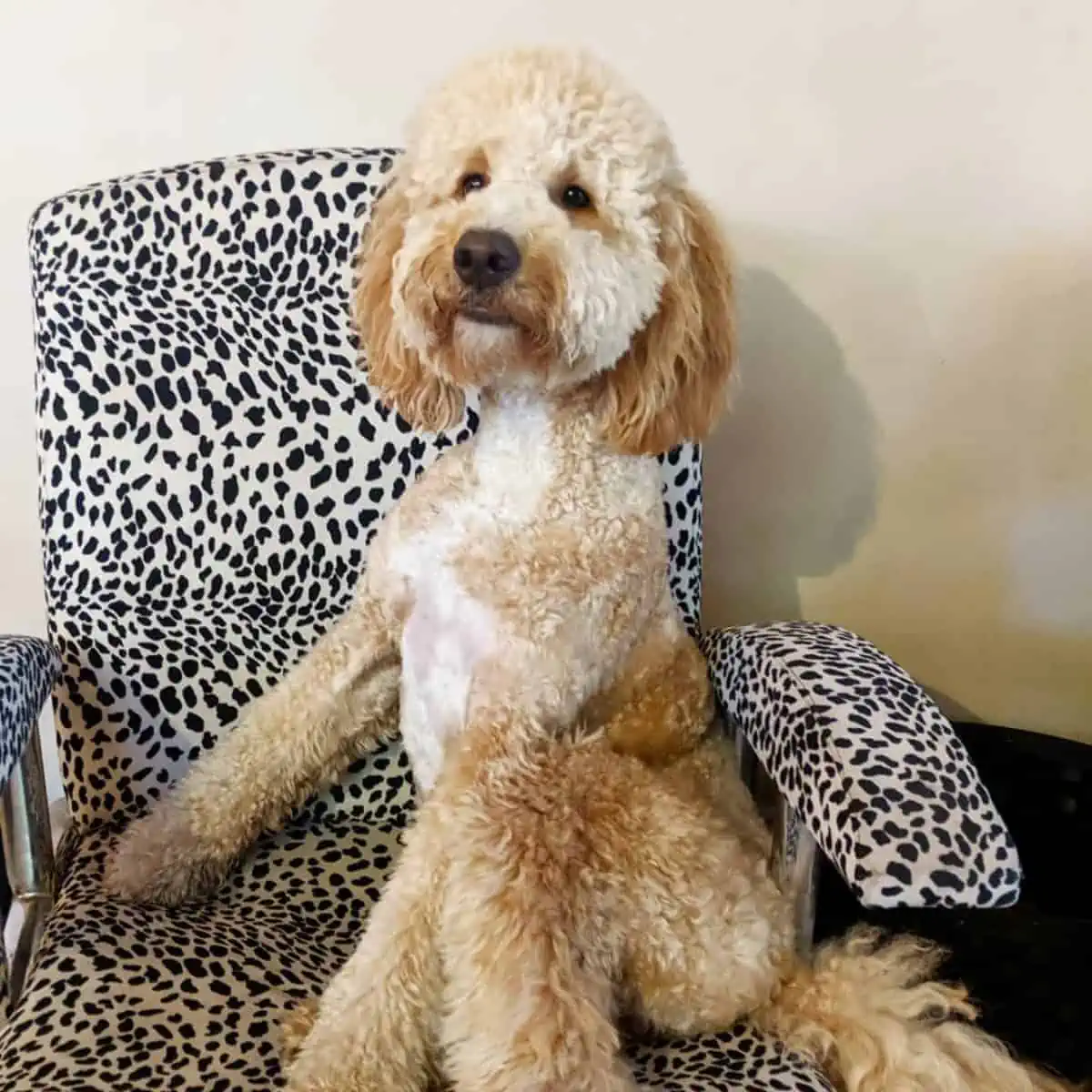
Hopefully, this guide will give you a bit more of an idea of what to expect if you’re considering getting yourself an F1b Goldendoodle.
What is an F1b Goldendoodle?
Looking at Goldendoodle puppies can be a little confusing when there are a whole bunch of different letters before their breed. There’s F1, F1b, F2, F2b… and the list goes on. Once you are able to decode this jumble it becomes a lot easier to know what you’re getting.
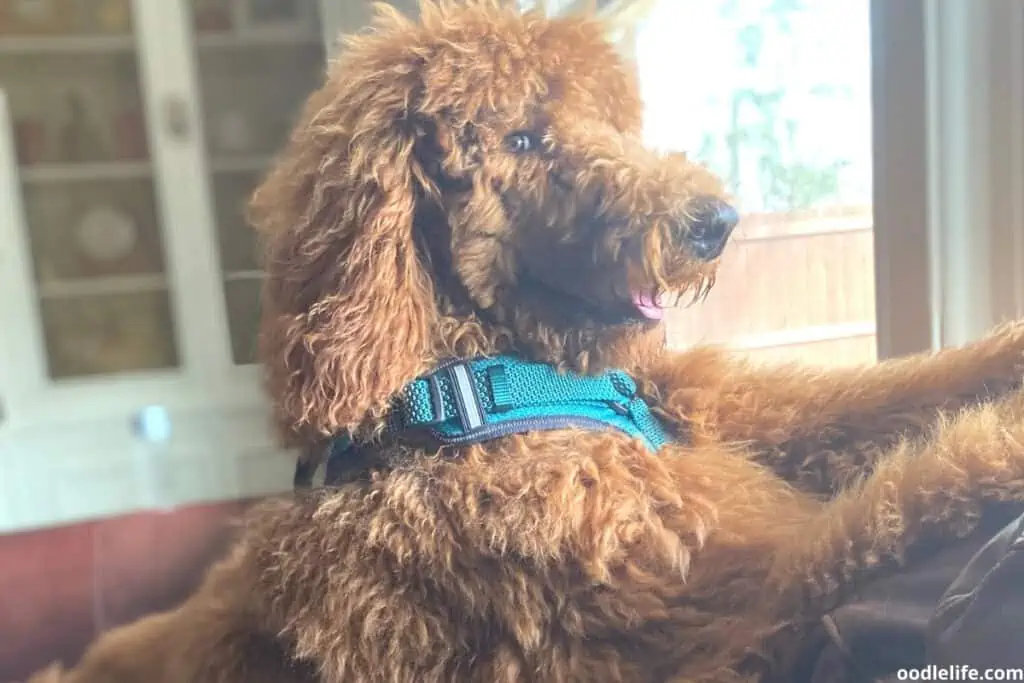
The F is a genetic term that stands for filial which in biology means the offspring of a cross-breeding. They use the term for both plants and animals when trying to make a new hybrid. When you see a code that starts with an F you know what you’re getting is not a purebred but a cross between two different breeds.
The number denotes how many crosses have taken place to achieve the offspring you’re considering. In this case, F1 would be a breeding between a Golden Retriever and a Poodle. F2 would be a breeding between two crossbreeds so both parents would be Goldendoodles.
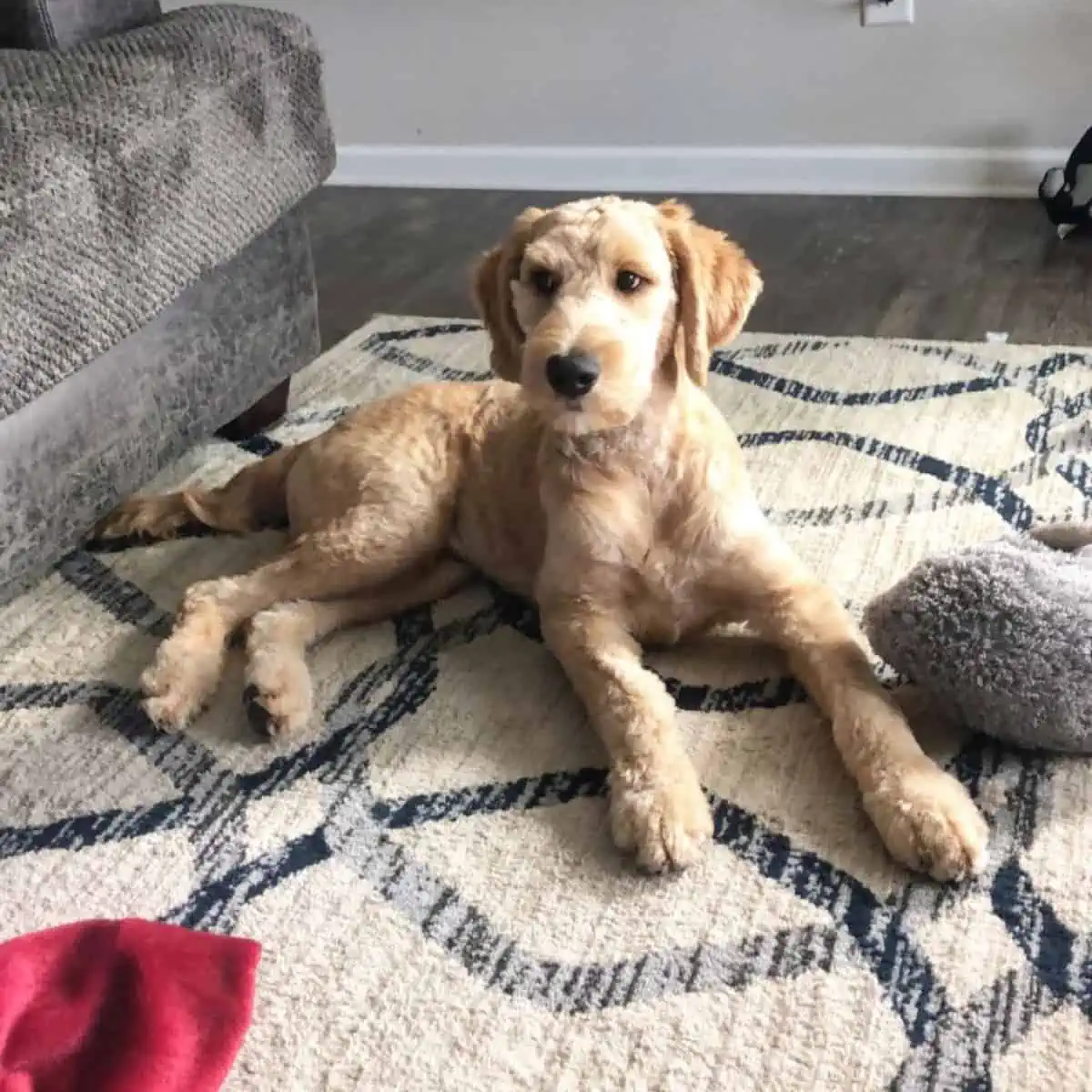
The b in an F1b Goldendoodle stands for backcross. This means that one of the parents is an F1 Goldendoodle while the other is either a purebred Poodle or Golden Retriever. This kind of breeding means you’ll have a dog that is 25% Goldendoodle and 75% Poodle or Retriever.
Most breeders breeding F1b Goldendoodles will choose the F1b breeding with the Poodle being the largest genetic influence because of the desired non-shedding coat properties.
F1b Goldendoodle Size Expectation
Generally, any crossbreed of a Poodle comes in different sizes because Poodles themselves come in different sizes. There are three sizes of Poodle: Toy, Miniature, and Standard. The Goldendoodle is generally bred from either the Miniature or Standard Poodle just because the Toy Poodle is much smaller than a Retriever.
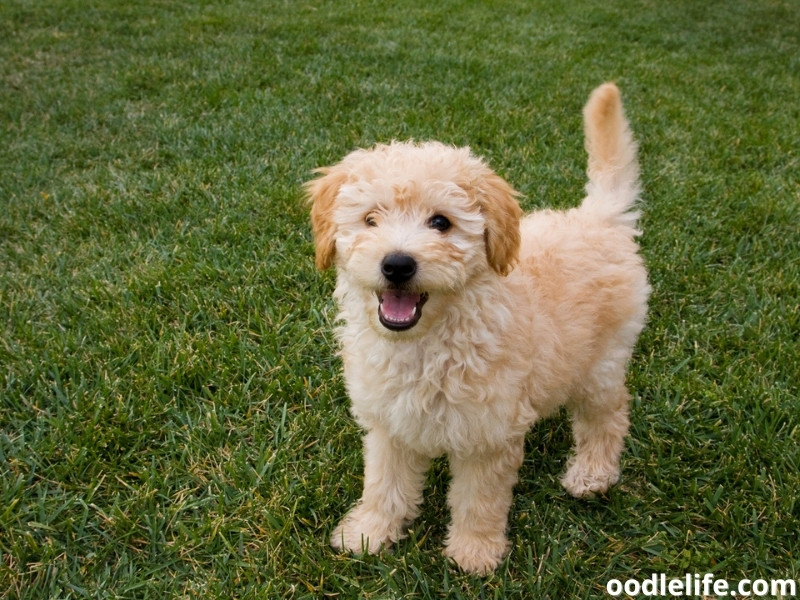
You also need to consider that an F1b Goldendoodle will contain 25% Golden Retriever so you’re more likely than not to get a large size dog or on the larger size of a medium dog if a Miniature Poodle is bred with an F1 Goldendoodle.
The size range is still quite wide depending on each individual breeding. They may grow to be as little as 15 inches tall or as large as 25 inches tall. The best guide to your puppy’s size would be viewing both parents, it will usually fall somewhere in between them.
Health of Your F1b Goldendoodle
When it comes to crossbreeds, you will usually find yourself with a healthier dog than if you buy a purebred dog. All breeds of dogs tend to be more inclined toward certain health issues. When you take a breeding pool of animals and reduce it down to breed certain traits to get different breeds of dogs, we are making them look similar but also as a side effect breeding some common health issues into them.
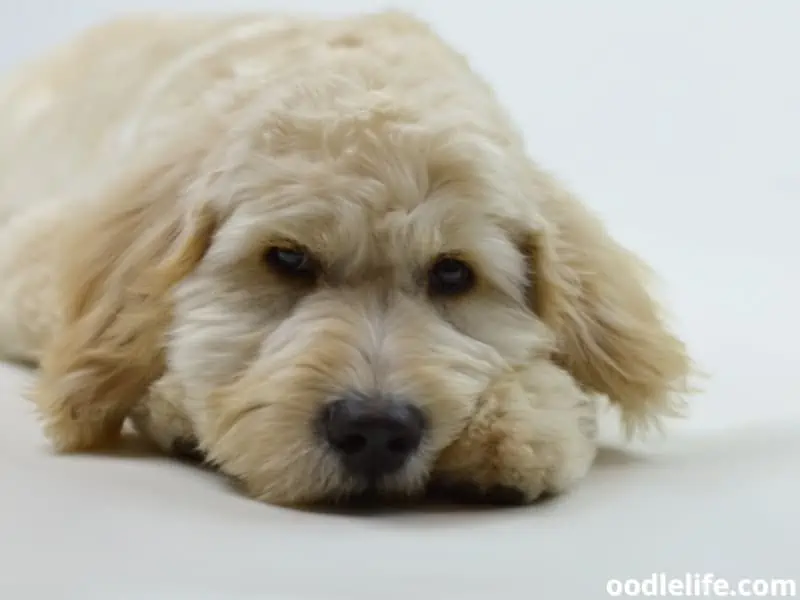
It’s true that with both Golden Retrievers and Poodles your crossbreed puppy may be at risk of more common ailments but the risk is generally lower because the gene pool is wider and your puppy’s hereditary issues are diluted.
When you get your Goldendoodle puppy, you should only buy from a breeder who has done the right genetic and health tests on their breeding dogs. Breeders are able to hip score their adults to make sure they’re not passing on joint issues to puppies and can get things like their eyes and hearts certified as not passing on any hereditary issues. While your wallet may be a bit lighter from visiting a good breeder initially, it will save you lots of vet visits in the long run by making sure your puppy is from a reputable breeder.
F1b Goldendoodle Temperament
Goldendoodles take the best parts of two hugely popular breeds and create a cute, hypoallergenic, and super trainable family pet. They’ve grown massively in popularity for a very good reason and are quickly getting a reputation for being an amazing family pet. While they are active and energetic, they have the soft characteristics of Golden Retrievers which make excellent family pets with the quick learning of the Poodle.
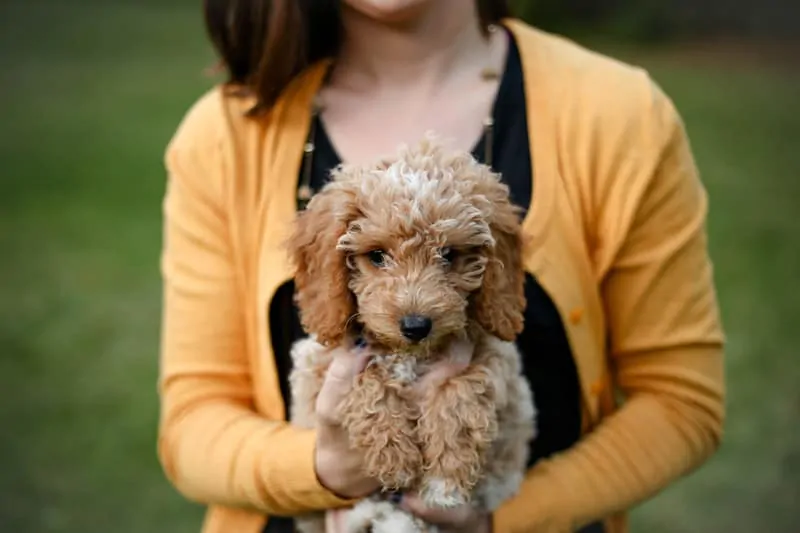
They’re known to be highly sociable with both dogs and humans, though socialization should happen early and continue as they develop. Like many intelligent breeds of dogs, Poodles can become very anxious if they aren’t exposed to different environments and experiences from a young age. To make sure your Doodle can take everything in their stride, introduce them to lots of new experiences early on.
Exercise and Training Needs
Retrievers and Poodles are both highly active breeds and can easily walk upwards of two hours a day. Both are highly trainable but the Poodle tends to have an independent streak. While a Golden Retriever will do absolutely anything to gain reward from you, Poodles seem to take a second to figure out if it’s worth their time.
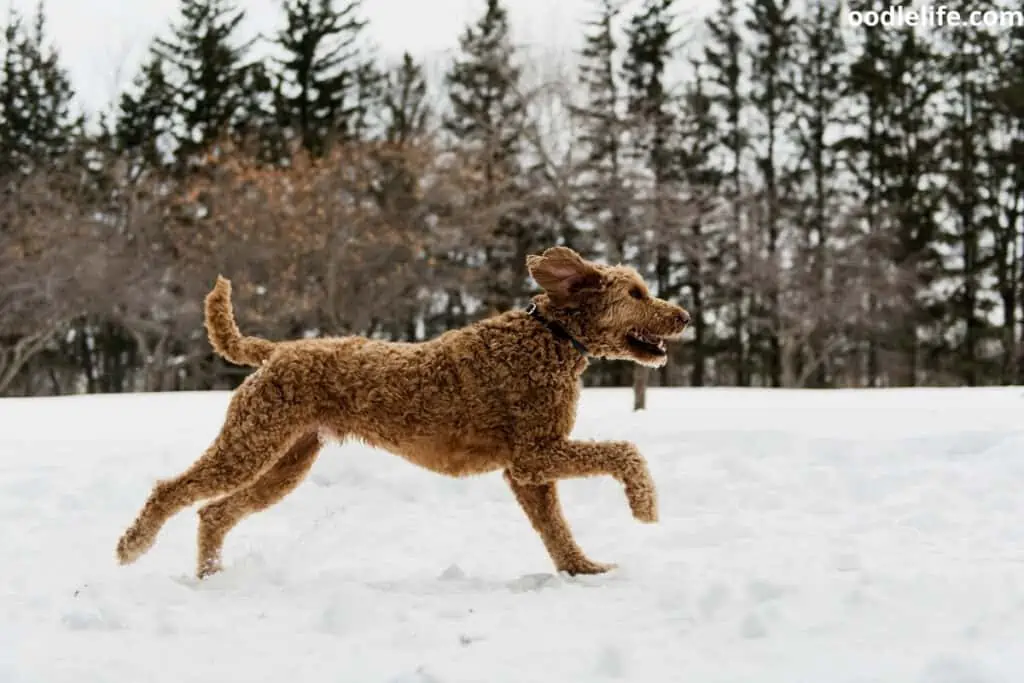
Poodles are well known for being one of the most intelligent breeds so it’s no shock that Goldendoodles are highly trainable. The more Poodle content they have in them, the more drive they have and usually the more complex tricks they can do.
Goldendoodles tend to hit a happy medium in between, they’re happy to go on walks and relax with their owners but they’re also more than capable of learning some fun tricks. They’re not quite as intense as their purebred Poodle lineage.
Early training on your Doodle is super important when they have the intelligence and independence of a Poodle. Creating a good working relationship between yourself and your puppy will help build the foundations for a long and happy relationship. Positive, reward-based training works great with these intelligent dogs as they’re always seeking rewards and keen to please.
Ways to Keep a Big Brain Busy
With genetics that make them super bright dogs, sometimes it can be difficult to find the off switch for your Goldendoodle. Training is a great way to tire them out and keep them busy because it makes them use their brain. Poodles and Retrievers are both bred to have great stamina to exercise so it’s rare you’ll be able to physically tire them out.

Mentally tiring them out means you don’t have to walk their legs off and they might even have a nap afterward meaning you can run some errands.
Food is a great way to keep dogs entertained, be that with a long-lasting chew like a bone or antler or even some enrichment games . When dogs have to work for their food it tires them out a lot more than just eating from the bowl. Many owners have scrapped using bowls altogether and instead find fun ways to feed their dogs every day and make them work for it a little more.
Intelligent dogs like Doodles really enjoy the extra enrichment it offers them.
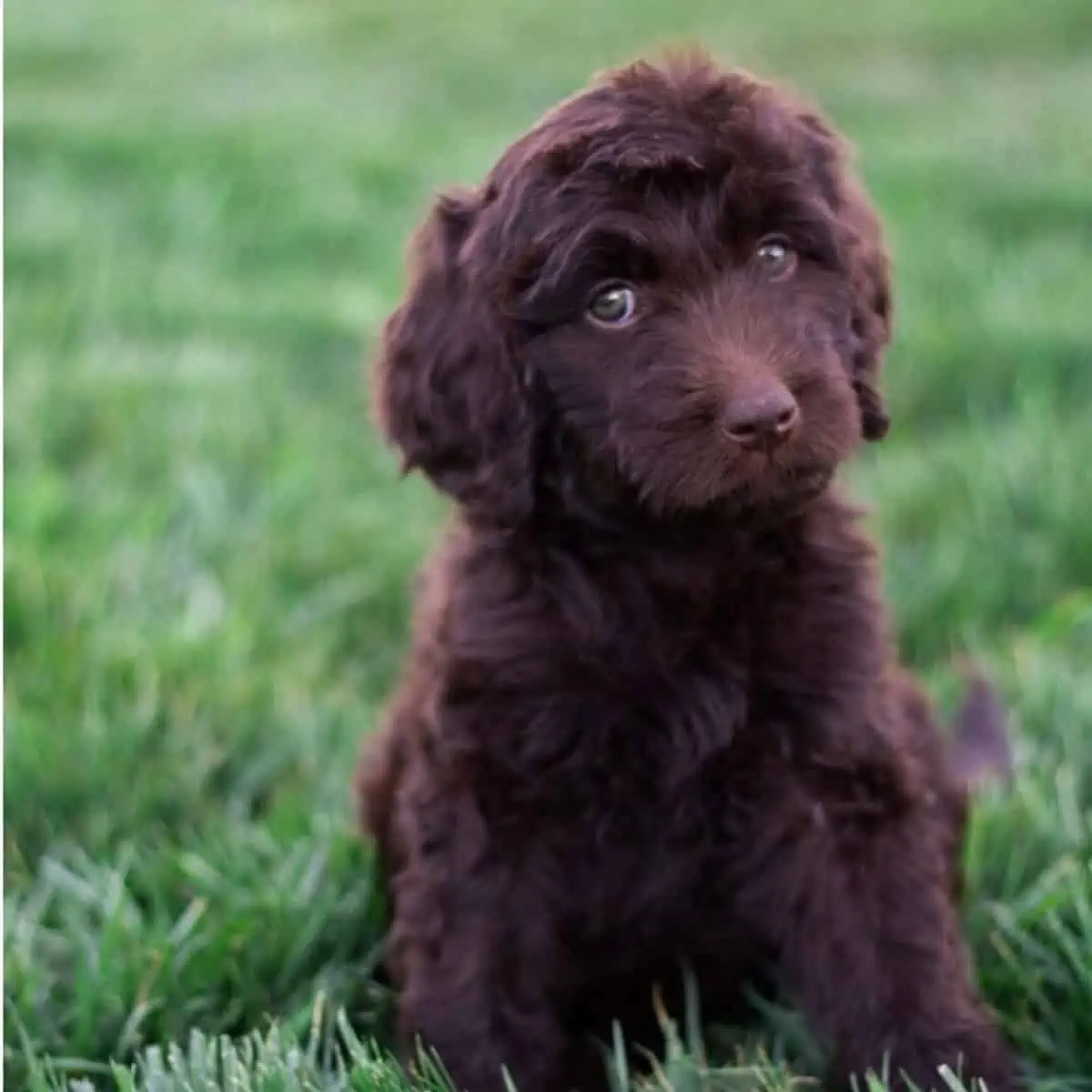
You can try things as simple as throwing their food all over the lawn or you can even get crafting and make your own snuffle mat out of rubber matting and old blankets! A snuffle mat, similar to grass, creates an uneven texture for you to hide food in and get their noses working during meal time.
If food enrichment isn’t enough then Doodles do great with sports like agility too!
Conclusion
There isn’t a vast difference between the generations of Doodles except for the percentage of Poodle and Golden Retriever your puppy will have. Knowing if they’re F1, F1b, or F2 is useful when you’re planning what breeds you would like to be dominant. If your main goal for getting a Goldendoodle is finding a dog that doesn’t shed then an F1b Goldendoodle with 75% Poodle in its genes is probably the best way to go.
Every dog is an individual including puppies from the same litter but understanding their lineage may give you some clues as to what to expect from your new addition.